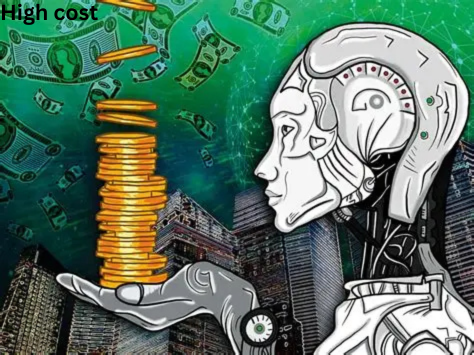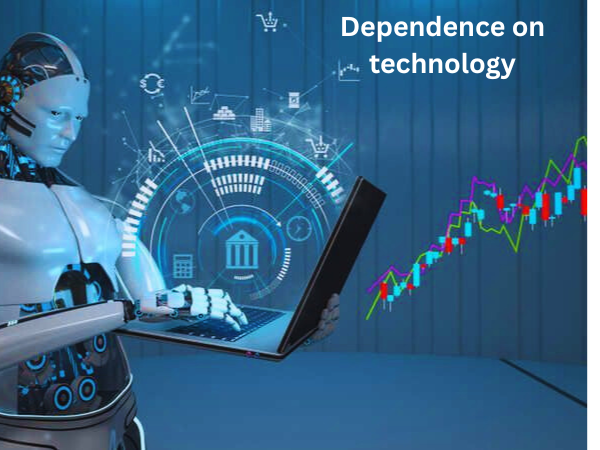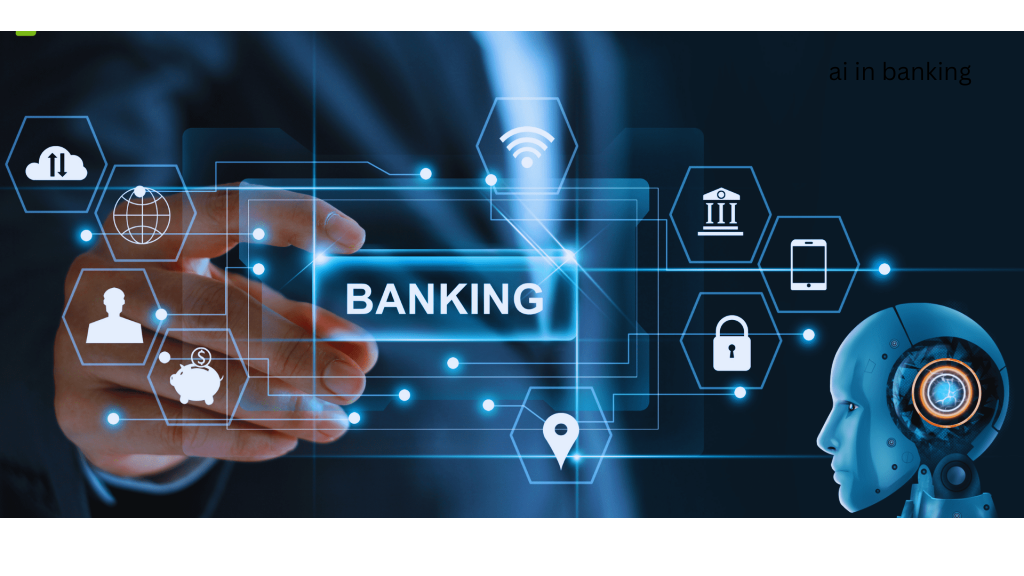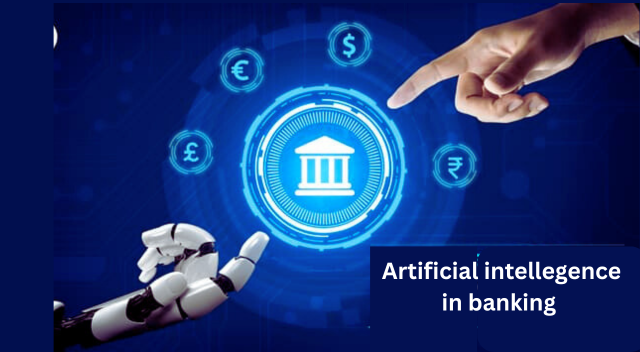70 Key Disadvantages of AI in Banking
Over 80% of banks are investing in artificial intelligence to improve their services. While AI can enhance efficiency, it also brings a set of challenges that many overlook. In this article, we’ll explore the disadvantages of AI in banking, shedding light on how these technologies can sometimes create more problems than they solve. Understanding these downsides is crucial for consumers and professionals alike, as it helps us navigate the evolving financial landscape.
Disadvantages of AI In Banking
Following are the disadvantages of artificial intelligence in the banking sector, shedding light on the potential challenges that must be navigated as we embrace automation and AI-driven solutions.
1. Job Displacement Risk
One major concern is the job displacement risk. As banks adopt AI technologies for tasks like customer service and data analysis, many traditional jobs may become obsolete. Employees who once handled these roles might find themselves out of work.
Loan officers, data entry clerks, and even some analysis roles could be replaced by AI algorithms, leading to job insecurity for many professionals.
2. Cybersecurity Vulnerabilities
As banks increasingly depend on advanced algorithms to handle transactions and customer data, they become prime targets for cybercriminals. A single breach can compromise sensitive information, leading to financial loss and a damaged reputation. Moreover, more advance of AI technology often moves fast regulatory measures, leaving gaps that hackers can exploit. This creates a constant cat-and-mouse game between security teams and cybersecurity threats, which can also become more sensitive for banking data.

3. Lack of Human Empathy
One of the significant disadvantages of AI in banking is its lack of human empathy. While AI can analyze data and make decisions at lightning speed, it often misses the emotional touch that come into play during customer interactions . Automated responses or chatbots are often not helpful for resolving issues and do not satisfy customers, which can negatively impact their overall impression of the interaction.
Customers also prefer face-to-face interaction for resolving issues such as payment problems. When their needs are not met, it can create trust issues between them.
4. Algorithmic Bias
This occurs when AI systems make decisions based on incorrect data or assumptions, leading to unfair treatment of certain customers. For example, if a bank’s AI is trained mostly on data from a specific demographic, it may not accurately assess the creditworthiness of people from other backgrounds.
Leading to unfair problems, such as discriminatory loan approvals or biased investment recommendations
5. Data Quality Dependence
AI systems depend heavily on accurate and clean data to function effectively. If the data used is incorrect or outdated, the AI’s decisions can lead to poor outcomes. If the data used to train these systems contains biases, the AI may indirect discrimination in lending or customer service. This can harm certain groups of people and create unfair practices.
This dependence on data quality can be a major challenge for banks requiring robust data management practices to ensure AI reliability.
6. High Implementation Costs
AI systems require high investment in technology and infrastructure. Banks must purchase advanced software and hardware, which can strain budgets, especially for smaller institutions.

7. Technical Problems
One major concern is the potential for technical issues. These can arise from software bugs or system failures, which may disrupt banking services and lead to customer frustration.
System failures can disrupt AI-powered banking services, causing troubles for customers and potentially leading to financial losses. These technical issues sometimes loss the important data that cannot be backup.
8. Limited Domain Knowledge
AI systems depend on the data they are trained on, and if that data doesn’t cover all aspects of banking, the AI may not perform well in certain situations.
They did not perform well for the customer, which also created trust issues between them.
9. Loss of Personal Touch
Many customers appreciate speaking with a real person when they have questions or need help. With AI, interactions can feel robotic and impersonal.
Customers also prefer face-to-face interaction for resolving issues such as payment problems. When their needs are not met, it can create trust issues between them. Automated responses or chatbots are often not helpful for resolving issues and do not satisfy customers.
10. Impact on Education and Skill Development
As banks increasingly rely on AI for tasks like customer service and data analysis, there may be less need for human employees. This can lead to job losses, making it essential for workers to adapt and learn new skills. If they don’t, they risk being left behind in a rapidly changing job market.
Moreover, the reliance on AI can create gaps in knowledge. Employees might not develop strong problem-solving skills if they depend too much on automated systems. This lack of skill development can affect their ability to handle complex situations that require human judgment.
11. Lack of Accountability
When decisions are made by algorithms, it can be hard to pinpoint who is responsible for mistakes. This can lead to issues when customers are affected by these errors.
This lack of accountability can result in difficult legal and ethical difficulty when addressing financial losses caused by algorithmic errors.
12. Inadequate Training Data
AI systems depend on large amounts of high-quality data to learn and make decisions. If the data used is incomplete or biased, the AI may produce inaccurate results.
This can lead to mistrust among customer especially when it comes to loan approvals or fraud detection.
13. Moral considerations
One major concern is the issue of moral considerations. AI systems can make decisions based on data, but they lack the human touch that understands ethical implications. For example, an algorithm might deny a loan application without considering individual circumstances, leading to unfair outcomes.
Addressing these ethical concerns and ensuring fairness in AI-driven financial decision is a complex challenge.
14. Dependence on Technology
Banks depend heavily on AI systems to handle tasks like customer service and fraud detection. If these systems fail or breck, it can lead to serious problems.
This also cause loss of jobs as banks use AI to automate processes, many employees might find their roles replaced by machines. This can create a sense of uncertainty and fear among workers.

15. Lack of Emotional Intelligence
One major concern is the lack of emotional intelligence. AI systems can analyze data and make decisions, but they struggle to understand human emotions. This can be a problem in customer service situations where empathy is crucial.
For example, if a customer is upset about a denied loan application, an AI chatbot may provide a standard response without recognizing the customer’s feelings. This can lead to frustration and dissatisfaction. They also create trust issues between them.
16. Unexpected Outcome
One major concern is the risk of errors. If an AI system makes a mistake in processing transactions or assessing loan applications, it can cause significant financial issues for both the bank and its customers. These errors may stem from flawed algorithms or incomplete data.
Financial crises, natural failures, or sudden political changes can disrupt the market in ways AI may not predict well, causing unexpected financial losses.
17. Lack of Transparency
One major concern is the lack of transparency in AI decision-making processes. Unlike humans, AI systems often operate like a “black box,” making it hard to understand how they reach certain conclusions.
This lack of clarity can lead to issues, especially in areas like loan approvals or fraud detection. Customers may feel frustrated if they cannot understand why their application was reject for suspicious activity. This can build trust issues between banks and their clients.
18. Psychological Impact on Professionals
As AI systems take over tasks like customer service and data analysis, many bank employees may feel threatened by job loss. This fear can lead to stress and anxiety among workers who worry about their future.
This psychological impact highlights the need for supportive measures, such as retraining and upskilling programs, to help professionals adapt to the changing banking landscape .
19. Cultural Opposition
One major concern is cultural opposition among employees and customers.
Moreover, cultural differences across regions may affect how AI is perceived and accepted. In some cultures, there may be a stronger importance on personal relationships and trust, which AI systems, often devoid of human touch, may struggle to replicate. This can result in customer dissatisfaction and a reluctance to engage with automated services.
20. Loss of Human Touch in Customer Relationships
As banks increasingly depend on AI-driven chatbots and automated systems for customer service, the personal interactions trust, and loyalty are diminished. Customers often prefer speaking with a real person, especially when dealing with complex financial issues or sensitive matters. For example, payment issues.
Moreover, the lack of feelings and understanding in AI interactions can lead to disappointment and dissatisfaction. Automated responses may not adequately solve costumer needs, leaving individuals feeling undervalued.
21. Regulatory Compliance Challenges
Banks must navigate a complex landscape of regulations, which can vary significantly by region and change frequently.
This complexity arises from the dullness of machine learning algorithms, which can make it difficult for banks to demonstrate adherence to rules designed to prevent discrimination and ensure transparency. Due to this we face fraud and regulatory compliance.
22. Generational Change
Different generations have varying levels of comfort with AI technology. Any older bank employees may struggle to adapt to new technologies, leading to potential job loss and a skills gap in the workforce.
In contrast, older generations might be more cautious, preferring traditional banking methods
23. Difficulty in Error Correction
When an AI system makes a mistake, identifying and fixing that error can be complicated. Unlike humans, who can quickly recognize and learn from their mistakes, AI systems require complex algorithms and extensive data to adjust their operations.
This difficulty underscores the need for transparent AI systems and robust error correction mechanisms to ensure accuracy and trust
24. Risk of Lock-In
This occurs when banks become overly dependent on a specific AI system or vendor. Once they invest time and resources into a particular technology, switching to another system can be costly and complicated.
when banks totally depend on AI system, they also face risks and challenges
25. Barriers to Entry for SMEs
One major issue is the high cost of implementation. Setting up AI systems can be expensive, which creates barriers to entry for small and medium-sized enterprises (SMEs). Many smaller banks may struggle to afford the necessary technology and expertise.
26. Vulnerability to Economic Shifts
One major concern is the vulnerability to economic shifts. AI systems rely on historical data to make predictions. If the economy changes suddenly, these systems might not adapt quickly enough, leading to poor decision-making.
This vulnerability highlights the need for banks to build strong AI systems that can adapt to changing economic conditions and ensure continued reliability.
27. Dependence on Third-Party Providers
Banks often depend on external companies to supply AI technologies and services. This dependence can lead to weakness, especially if the provider experiences technical issues or security breaches.
Additionally, using third-party AI solutions can limit a bank’s control over its data. When sensitive customer information is handled by outside vendors, there is an increased risk of data leaks or misuse. This situation can damage a bank’s reputation and build weak customer trust.
28. Limited Adaptability to Unstructured Data
AI systems are good at handling structured data, but they often have trouble with unstructured data like news articles, social media feelings, and geopolitical events.
These factors can greatly affect financial markets, and AI may struggle to understand their details, which could result in incomplete insights.
29. Complexity in Management
Implementing AI systems requires specialized knowledge and expertise, which can strain existing resources and lead to potential mismanagement.
Moreover, the on AI can create a disconnect between employees and customers. As banks adopt automated processes for customer service, the human touch may diminish, resulting in less personalized experiences. They also build trust issues between client and bank.
30. Loss of Competitive Advantage
One major issue is the loss of competitive edge. As more banks use AI, they become less distinct from each other. This can create a market where new ideas are everywhere, making it hard for any bank to stand out.
If a bank’s algorithms fail or get hacked, it could lead to big financial losses or data breaches. Many banks may lack the technical skills to properly manage and protect their AI systems, which increases this risk.
31. Scalability Issue
One major issue is that AI systems might not scale well, limiting their usefulness for larger institutions. As banks grow, they often face challenges in integrating AI solutions across various departments and branches.
32. Integration Challenges:
Integrating AI with existing banking systems can be tough.Many banks have old technology that doesn’t easily work with new AI tools. This can lead to compatibility issues and may require significant updates or replacements of current systems.
33. Potential for Cascading Failure
One major concern is that AI failures can cascade, causing widespread issues for banks and their customers. When an AI system makes a mistake, it can lead to incorrect transactions, which may affect multiple accounts simultaneously.
34. Inadequate Disaster Recovery:
AI systems might lack disaster recovery plans. This means that if something goes wrong — like a cyber-attack or a technical failure — banks could struggle to keep their services running smoothly.
35. Bias in Decision-Making:
AI decisions can be biased. This happens when the data used to train AI systems reflects existing prejudices or inequalities. As a result, the outcomes of these decisions can unfairly disadvantage certain groups of people, impacting their access to loans or credit.
36. Lack of Transparency
AI decision-making processes can be hard to understand. This lack of transparency can make it difficult for customers and even bank employees to grasp how decisions are made, such as loan approvals or credit scoring
37. Risk of Overfitting
This means that they learn the training data too well, capturing noise and specific details instead of general patterns. As a result, when these models are applied to real-world scenarios, they often perform poorly.
Banks must have access to quality data for AI systems to work effectively. If the data is biased or incomplete, it can lead to unfair outcomes, such as discrimination in lending practices.
38. Potential for Algorithmic Drift
This means that as they process more data, their accuracy can decrease. When algorithms drift, they may make decisions based on outdated or incorrect information. Due to incorrect data trust issues build between costumers and bank.
39. Security Breach Risks:
One major concern is that AI systems can be vulnerable to security and privacy breaches. This means that hackers might find ways to access sensitive information, putting customer data at risk.
Another issue is the potential for bias in AI algorithms. If these systems are trained on biased data, they can make unfair decisions, like denying loans to certain groups of people. This can lead to discrimination and inequality in banking services.
40. Risk of Dehumanization
This means that customers may feel like they are just another number rather than a valued person.
When banks rely heavily on AI for customer service, there is often less human interaction. This can make it harder for customers to build relationships with their bank. People appreciate talking to real people who understand their needs and concerns.
41. Challenges in Measuring ROI:
Measuring the return on investment (ROI) of artificial intelligence (AI) in the banking sector can be quite challenging, as it often requires the use of specialized and carefully tailored metrics. These metrics need to capture not only the financial gains but also the improvements in efficiency, customer satisfaction, and risk management that AI technologies bring to banking institutions.
42. Limited Creativity
AI systems might lack creativity, limiting their problem-solving abilities. This limitation can restrict their ability to think outside the box when solving complex problems.
For instance, traditional banking challenges often require innovative solutions that AI may not be able to generate. Human bankers can draw on personal experiences and intuition to navigate unique situations, while AI relies on data patterns.
43. Inadequate Audit Trails
This means it can be challenging to track how and why certain decisions are made. Without a clear record, it becomes difficult for banks to ensure accountability.
If the data used to train these systems contains biases, the AI may make unfair lending or credit decisions. This can lead to discrimination against certain groups of people, which is not only unethical but also harmful to the bank’s reputation.
44. Customer Frustration
AI can cause customer frustration, if not implemented well. When customers interact with chatbots for support, they may find the responses unhelpful or confusing. If the AI system doesn’t understand their questions correctly, it can lead to a frustrating experience. This could result in customers feeling unheard and dissatisfied with the service.
45. Complexity in Explainability
Many AI systems work like a “black box,” meaning their decision-making processes are not easy to understand. This can make it hard for banks to explain their decisions to customers or regulators.
If the data used to train these systems contains biases, the AI can make unfair decisions. For example, it might approve loans for some people while denying others without clear reasons.
46. Effect on Startups and Smaller Players
One major concern is its effect on startups and smaller players in the market. These smaller banks often lack the resources to implement advanced AI systems like their larger competitors.
As big banks invest heavily in AI, they can offer faster services and better customer experiences. This creates a gap that can make it hard for startups to compete. Smaller players may struggle to attract customers who are drawn to the latest technology.
47. Complication in Consumer Education
One significant drawback is the complication in consumer education. Many customers may not fully understand how AI technologies work. This lack of understanding can lead to mistrust. If customers are unsure about how their data is being used or how decisions are made, they may hesitate to engage with AI-driven services.
48. Integration with Legacy Systems
Many banks still rely on outdated technology, making it difficult to implement new AI solutions effectively.
These older systems often lack the flexibility needed for seamless integration. This can lead to data silos, where information is trapped in different departments and cannot be shared easily. As a result, banks may miss out on valuable insights that AI can provide.
49. Minimize Job Satisfaction
One major concern is the potential to minimize job satisfaction among employees. As automation takes over routine tasks, many workers may feel undervalued or redundant, leading to decreased morale.
50. Gaps in the Event of AI Failure
If an AI system malfunctions or makes incorrect decisions, it can lead to significant financial losses for both the bank and its customers.
If the data used to train these systems is flawed or unrepresentative, it may result in unfair treatment of certain groups. This can harm customers and damage a bank’s reputation.
51. Over-reliance on algorithms
Banks often depend heavily on these complex systems to make decisions about loans, investments, and customer service.
When banks trust algorithms too much, they risk ignoring the human touch. For example, an AI might reject a loan application based solely on data, without considering the personal circumstances of the applicant. This can lead to unfair outcomes for individuals who truly need help.
52. Lack of common sense
AI algorithms are trained on existing data, which can carry biases from the past. If these biases go unchecked, they can result in unfair treatment of customers, such as discrimination in loan approvals.
53. Risk of AI-driven market volatility:
When algorithms make quick trading decisions based on data, they can sometimes react too sharply to market changes. This can lead to sudden price swings, which may harm investors and destabilize markets and also risk comes.
54. Limited ability to handle multi-step problems
One major drawback is its limited ability to handle multi-step problems. For example, when a customer faces a complex issue that requires several steps to resolve, AI systems can struggle to follow through effectively.
This can lead to frustration for customers who expect quick and accurate assistance. Additionally, AI lacks the emotional intelligence that human bankers possess. It may not understand nuances in customer emotions or situations, leading to impersonal interactions.
55. Risk of AI-driven errors in transaction processing
One major concern is the risk of AI-driven errors in transaction processing. These errors can lead to incorrect transactions, affecting both customers and the bank’s reputation.

56. Challenges in ensuring AI system flexibility
Banks often need to adapt their systems quickly to changing regulations or market conditions. However, rigid AI models can struggle to adjust, leading to potential compliance issues.
57. Risk of AI-driven errors in risk assessment
When banks rely too heavily on AI algorithms to evaluate creditworthiness or detect fraud, they might overlook important factors. Due to also detect many threats that also damage important information of banks
58. Errors in compliance monitoring
One major concern is the potential for errors in compliance monitoring. Banks must follow strict regulations to avoid legal issues, and any mistakes made by AI systems can lead to serious consequences.
These errors can stem from inaccurate data or flawed algorithms. If the AI misinterprets regulations or fails to detect suspicious activity, the bank could face hefty fines or damage its reputation. Compliance monitoring is crucial for maintaining trust with customers and regulators alike.
59. Financial losses from operational risk
One major concern is the potential for financial losses from operational risk. This can occur when AI systems make mistakes or fail to perform as expected. For example, when BANKS heavily depend on AI then threats come on it and also cause financial loses
60. Problems in Handling Unforeseen Scenarios
AI systems rely on historical data to make decisions. If they encounter a situation that hasn’t happened before, they may not respond appropriately.
For example, during unexpected economic events, AI might struggle to adjust its strategies. This can lead to poor decision-making, which affects both banks and customers. Additionally, AI lacks human intuition and empathy, making it hard to handle sensitive situations like customer complaints or fraud cases.
61. Accuracy vs. Interpretability Trade-off
While AI can analyze vast amounts of data quickly and make predictions with high accuracy, the processes behind these predictions can often be difficult to understand.
This lack of transparency can create problems. For example, if an AI system denies a loan application, it may not clearly explain why. Customers and even bank employees might struggle to trust decisions made by systems they cannot fully comprehend.
62. Loss of Human Relationship Management
In traditional banking, personal interactions are key. Customers often feel more valued when they can talk to a real person about their financial concerns. AI, while efficient, lacks the ability to build emotional connections. This can lead to a feeling of disconnect for customers who prefer face-to-face communication
63. Algorithmic Bias Amplification
This happens when AI systems use biased data, leading to unfair outcomes. For instance, if a bank’s AI is trained on historical loan data that reflects discrimination, it may continue to deny loans to certain groups unfairly.
64. Misinterpretation of Complex Data
AI systems analyze vast amounts of information, but they can sometimes misread or overlook critical details, leading to incorrect conclusions.
For instance, if a bank uses AI to assess a customer’s creditworthiness, the system might misinterpret the data due to biases in its training. This can result in unfair lending practices, where deserving customers are denied loans while others who may not qualify receive approval.
65. Load on Customers
chatbots may not always understand complex questions, leaving customers frustrated. This can lead to longer wait times and dissatisfaction, especially for those who prefer human interaction.
66. Regulatory Scrutiny and Failures
These systems can sometimes produce unexpected results due to errors in programming or flawed data. For instance, an AI algorithm might incorrectly assess a customer’s creditworthiness, leading to loan denials or approvals that should not have occurred. Such failures can damage customer trust and harm a bank’s reputation.
67. Social Inequalities
One major concern is that AI can deepen social inequalities. For instance, algorithms used in lending can sometimes discriminate against certain groups of people, making it harder for them to access loans.
68. Psychological Biases in AI Design
One major issue is the presence of psychological biases in AI design. These biases can lead to unfair treatment of customers based on flawed data or assumptions.
69. Compatibility Issues
One major concern is compatibility issues. Banks often use a mix of old and new systems, and integrating AI with these existing technologies can be challenging.
When AI tools are not compatible with current systems, it can lead to delays and increased costs. Banks may need to spend extra time and money to update their infrastructure, which can be a significant hurdle
70. Bad Calls
One major concern is the potential for “bad calls.” These are situations where AI systems make incorrect decisions based on flawed data or algorithms. For instance, an AI might mistakenly flag a legitimate transaction as fraudulent, causing inconvenience for customers.
CONCLUSION
AI has the potential to greatly enhance banking services; it also comes with several disadvantages that cannot be ignored. The reliance on technology can lead to job losses, as machines may replace human workers in various roles. Additionally, the risk of data breaches increases with the use of AI, putting customers’ sensitive information at risk. Furthermore, algorithms can sometimes make decisions that are biased or unfair, impacting certain groups negatively. It’s essential for banks to carefully consider these challenges and work towards solutions that ensure technology benefits everyone involved.
FAQs
FAQs about AI Disadvantages in Banking
- Can AI make mistakes in banking?
Yes, AI can make mistakes, especially if it is trained on poor-quality data or if the algorithms are not properly designed. - How does AI affect customer service in banks?
While AI can improve efficiency, it may also lead to impersonal interactions and frustration for customers who prefer human contact. - Is there a risk of data breaches with AI in banking?
Yes, using AI increases the risk of data breaches, as hackers may target systems that rely heavily on technology for sensitive information. - How can AI impact employment in banks?
AI can lead to job losses as automation replaces certain tasks, but it may also create new roles that require different skills.



